Skeleton purple: description, planting and care
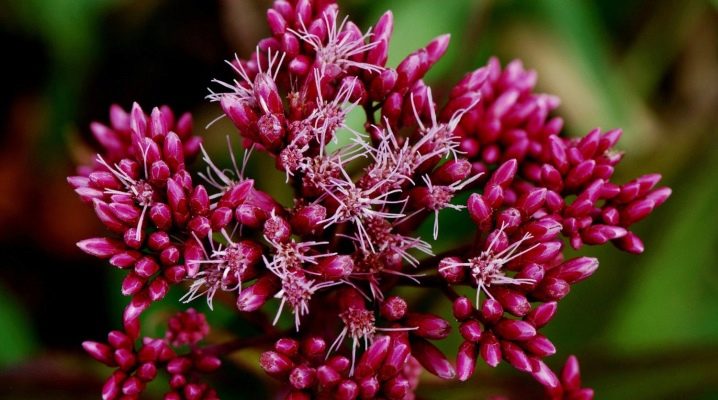
Purple rosewood is considered a fairly popular plant and is well known to summer residents and landscape designers. The plant attracts with its unpretentiousness, good decorative properties and resistance to most diseases and pests.


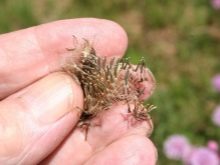
Characteristics of the species
Eupatorium Purpureum (lat. Eupatorium Purpureum) is a typical representative of the Astrov family and owes its name to leaves that strongly resemble the leaves of hemp, which was formerly called "poskon". The plant is native to North America, where it can often be seen in the wild. In addition to the American continent, the stethosis is widespread in Eurasia and in South Africa. In our country, the plant is equally often found both in the European and Asian parts of it and has many popular names.
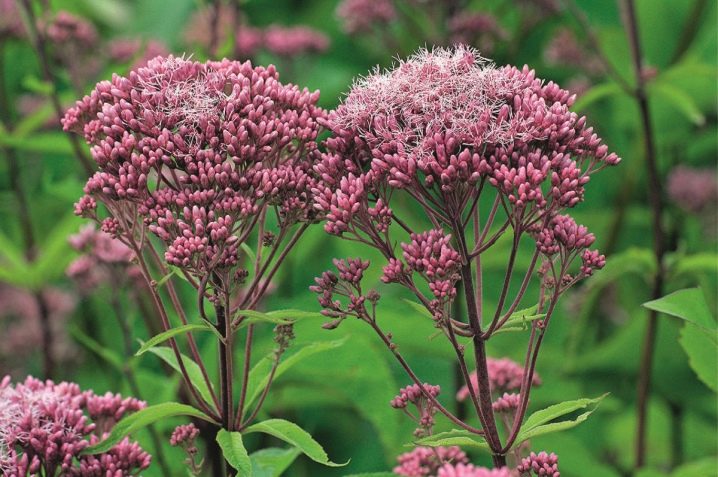
So, in one area it can be called a hatchery, hemp plant, royal grass and deaf nettles, while in other regions they call him a noble hemp, horse mane, turnip and sedach. The flower feels great in various ecosystems and grows equally well in the forest, in the meadow and along the river banks. Due to its absolute unpretentiousness, the plant grows rather quickly and forms colonies vast in area.
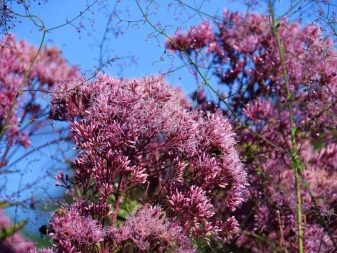
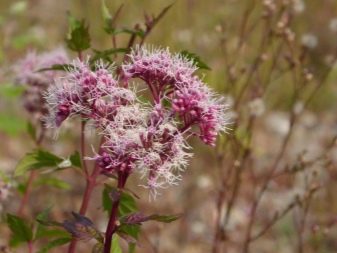
As for the description of morphological characters, the plant is a tall herbaceous shoot, reaching a height of up to 2 meters. The stem of the purple stew has a straight, strong structure and practically does not branch. Along its entire length, there are large oblong leaves of a deep green color with purple or lilac veins. The rhizome of the plant is quite well developed, which allows it to easily hold the overgrown dwarf shrub, which becomes quite heavy over time.
However, the main decoration of a perennial is purple flowers that do not fall for a long time.

The plant begins to bloom in early to mid-August and ends closer to October. Small flowers are collected in baskets, which, during flowering, look like voluminous flowering caps up to 30 cm in diameter. The fruits of the plant look very unusual and are presented in the form of crested achenes, inside which there are small rough seeds. But even after the end of flowering, the plant looks very beautiful and noble. By this time, the stem acquires a pink tint and looks quite impressive against the background of bright green leaves.
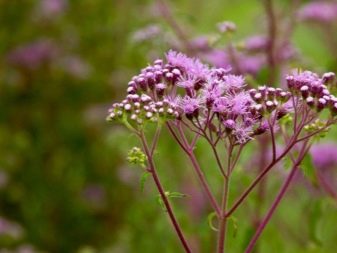

Reproduction methods
Reproduction of the stethoscope purple occurs in two ways: seed and vegetative. The second is the most optimal and contributes to the preservation of all varietal characteristics of the species. Moreover, seed reproduction is a rather lengthy process in which flowers appear at best 2 years after planting. Vegetative propagation, in turn, can be performed by dividing bushes, cuttings of rhizomes and shoots.
Root splitting is done with a sharp ax or bayonet shovel and requires considerable effort and dexterity. With this method, it is necessary to ensure that at least 3 buds remain on each bush, and the mother plant is more than 5 years old. However, this method is too traumatic for the root system and leads to the weakening of the plant.In this connection, the best option for vegetative propagation is cuttings, in which it is necessary to ensure that at least two internodes are present on cut cuttings.
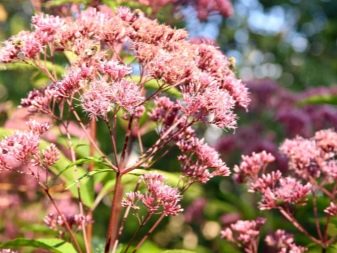

The most suitable time for cuttings is the second half of spring and summer.
Where is it used?
The scope of use of the stethoscope purple is quite wide. Due to its high decorative characteristics and absolute unpretentiousness, the plant is an independent element of landscape compositions when forming the tier of flower beds and hedges. The flower is often used for practical purposes, skillfully masking unsightly buildings and household plots of the local area with it. The planted plant grows well and blooms profusely for 10 years, requiring little or no attention.
In addition, it gets along well with all decorative species and can be safely included in a complex composition as a vertical dominant. The flower looks harmoniously with all types of cereals and with such plants as echinacea and astilba. However, the main decorative disadvantage of the stethoscope is its late flowering. The plant wakes up rather late and begins to bloom only at the end of May. Therefore, in order for the flower bed not to be empty, it is recommended to plant crocuses, snowdrops, scilla or corydalis to the steep.
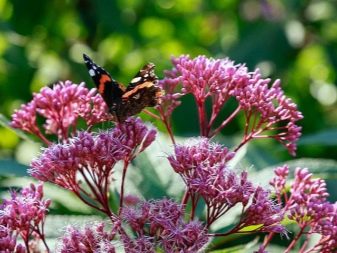
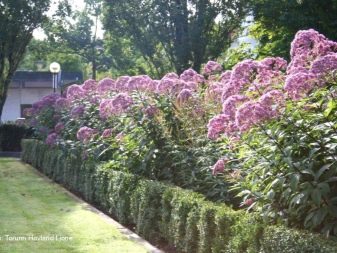
In addition to its decorative qualities, purple stethosis has a number of medicinal properties and is used in folk medicine.
The plant has a mild sedative, diuretic, anti-inflammatory, anthelmintic and choleretic effect and promotes the discharge of phlegm when coughing. However, not the whole flower has useful properties, but only its roots, which are harvested in the fall, after the plant has faded. Their infusion is used for diarrhea, gastritis, jaundice, high blood pressure and to lower blood cholesterol levels.
However, the course of treatment with stethosis purple must necessarily be agreed with the doctor and carried out only as directed. This is due to the content of poisonous alkaloids in the herb, the excessive use of which can be harmful to health.

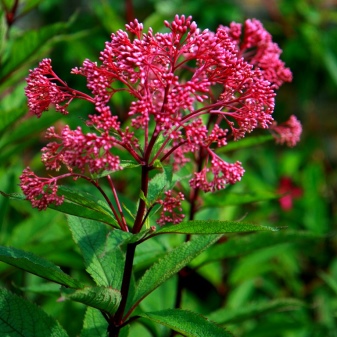
Growing features
Before you start planting the purple stethoscope, you need to choose the right place. The best option would be a slightly shaded or open sunny area, which contains light loose fertile soils. On sandy loam and clay soils, the culture grows a little worse, begins to lag behind in growth and blooms late. This necessitates the enrichment of depleted soils with compost, humus, wood ash or bone meal.
In addition, the slope is a moisture-loving plant and the best place for it would be a lowland with a high moisture content.
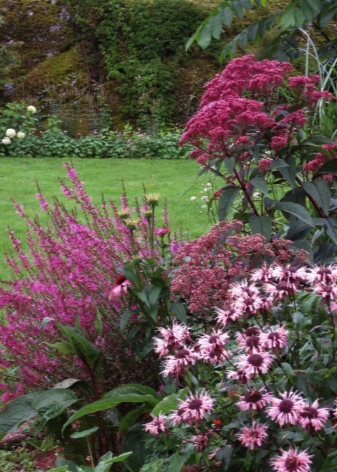
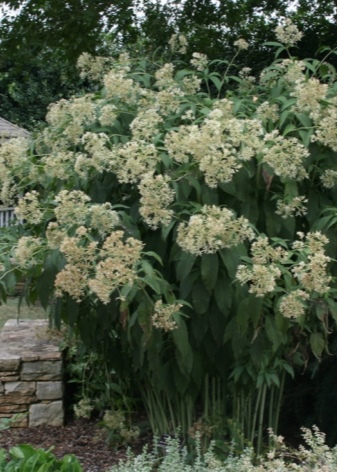
Landing
Once the location is selected, you can start planting. There are 4 ways to do this: by seeds, seedlings, dividing the rhizome and cuttings.
- Stethoscope purple seeds can be purchased at any flower shop or assembled yourself in the fall. Seeds are planted in seedling pots, lightly sprinkled with soil, watered and covered with foil or glass. After the seeds germinate and 4-5 leaves appear on them, young shoots are planted in separate containers. Then, as soon as the soil warms up to at least 10 degrees, the plants are transplanted into open ground. The flowering of a seed-planted plant usually occurs after a couple of years.
- If the steep was acquired by seedlings, then it is planted in the spring months in a warm and humid land. The distance between the holes should be at least 70 cm, otherwise the adult bushes will be cramped. After planting, the soil is usually mulched with sawdust, which maximizes moisture retention in the soil and prevents weeds from appearing.
- Planting a split bush is the simplest and least labor-intensive method. To do this, a divided rhizome with a native lump of earth is placed in a hole, covered with earth, tamped and watered.
- Planting a steep tree by cuttings also does not cause difficulties and consists in the following: shoots with 3-4 buds are cut off, the lower leaves are removed from them and placed in a hole up to half. Then the cutting is sprinkled with earth, tamped, watered and covered with a plastic bottle. After the plant takes root, the cap is removed and the shoot is left to winter. In the spring, the plant can be replanted to a new location.

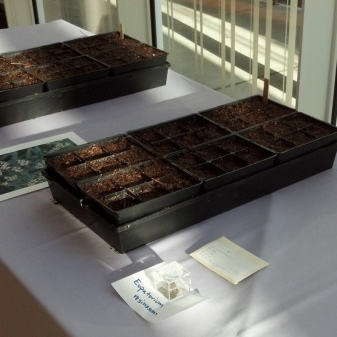
Care
Despite the fact that the purple rosebone is a rather unpretentious species, it still needs minimal attention. Plant care includes a number of simple procedures.
- Watering a flower should be carried out regularly, especially in hot dry summers. Water the plant late in the evening, after sunset.
- Top dressing The stethosis is performed three times a year: in early spring, in the summer before flowering and after the fall of color in the fall. It is recommended to use humus, wood ash, compost, nitroammophoska and urea as fertilizer.
- Preparation for wintering perform as follows: young and weakened shoots are covered with spruce branches, and the stems of adult plants are cut to 10-15 cm in height and left to winter in this form. The awakening of dormant plants occurs very late, which is why in some regions the flower wakes up only at the end of May. But then the purple stew begins to grow actively and pleases those around with its flowering until the onset of cold weather.
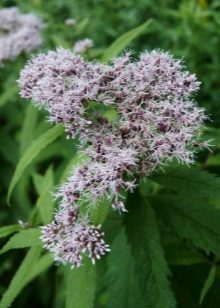


From the video, you can find out a lot of useful information about such an unpretentious plant as a bush.
































































































The comment was sent successfully.